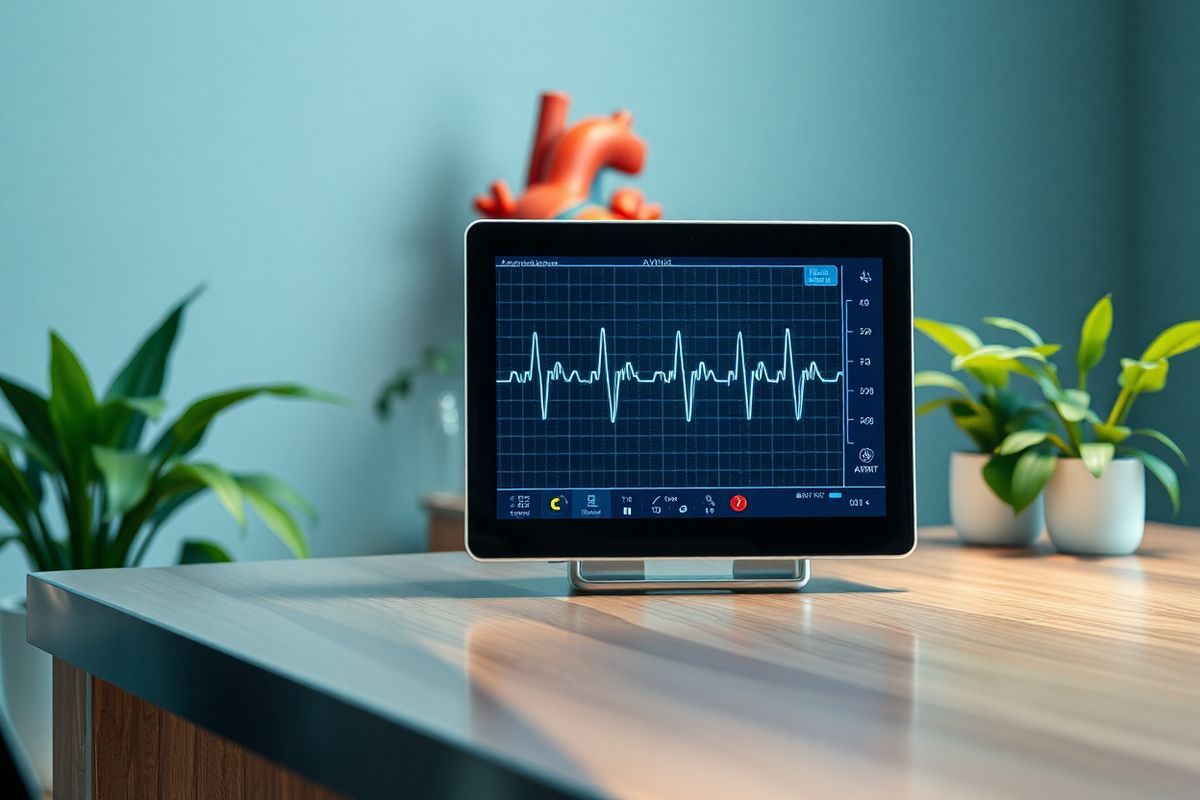Table of Contents
What is Atrioventricular Nodal Reentrant tachycardia (AVNRT)? An Overview of the Condition

Atrioventricular nodal reentrant tachycardia (AVNRT) is recognized as the most prevalent type of supraventricular tachycardia (SVT), characterized by an abnormal increase in heart rate due to an extra electrical pathway within the heart’s conduction system. Typically, a normal heart rate ranges from 60 to 100 beats per minute at rest, but individuals with AVNRT can experience sudden episodes of rapid heartbeat, often reaching rates between 140 to 280 beats per minute (Cleveland Clinic, n.d.). This condition falls under the broader category of arrhythmias, which refers to any irregular or abnormal heartbeat.
In a healthy heart, the sinoatrial (SA) node, functioning as the natural pacemaker, initiates electrical signals that propagate through the heart, facilitating synchronized contractions of the atria and ventricles. However, in the case of AVNRT, a reentrant circuit forms due to the presence of an additional pathway near the atrioventricular (AV) node. This circuit allows the electrical impulse to loop back and continuously stimulate the heart, leading to episodes of rapid heartbeats (Cleveland Clinic, n.d.).
The Mechanism Behind AVNRT: How It Disrupts Normal Heart Rhythm

The underlying mechanism of AVNRT involves a premature atrial contraction that triggers an electrical impulse to enter the reentrant circuit caused by the dual pathways associated with the AV node. This circuit consists of a fast pathway and a slow pathway, which can facilitate the rapid conduction of impulses. When a premature contraction occurs, it can cause the electrical impulse to engage in a looping pattern, leading to sustained tachycardia (Cleveland Clinic, n.d.).
The reentrant circuit operates by exploiting the differing conduction speeds of the two pathways. The fast pathway conducts impulses quickly but has a shorter refractory period, while the slow pathway conducts impulses more slowly but has a longer refractory period. This property allows the impulse to continuously circulate within the circuit, resulting in a tachycardic state until the circuit is interrupted by a subsequent impulse or other external factors, such as vagal maneuvers or medication (Cleveland Clinic, n.d.).
Recognizing the Symptoms of AVNRT: What Signs Should You Look For?
AVNRT episodes can vary in frequency and duration, often occurring unexpectedly. Common symptoms experienced during these episodes include:
- Palpitations: Individuals often describe a sensation of their heart racing, fluttering, or pounding.
- Dizziness: Due to reduced cardiac output during tachycardia, patients may feel lightheaded or dizzy.
- Chest Discomfort: Some patients report a feeling of pressure or discomfort in the chest.
- Shortness of Breath: Rapid heart rates can lead to decreased aerobic capacity, resulting in breathlessness.
- Polyuria: Increased urination may occur due to changes in blood flow and hormone release during episodes.
In severe cases, individuals may experience more alarming symptoms, such as syncope (fainting), confusion, significantly low blood pressure, or chest pain, necessitating immediate medical attention (Cleveland Clinic, n.d.).
Who is at Risk? Understanding the Demographics and Causes of AVNRT
AVNRT can affect individuals across a wide demographic spectrum, but certain factors may increase susceptibility to the condition. Research indicates that AVNRT is more prevalent in women than men and can occur in young, otherwise healthy adults. Some familial patterns suggest a potential genetic predisposition, although a definitive genetic explanation has not yet been established (Cleveland Clinic, n.d.).
Risk factors for AVNRT include:
- Age: While it can occur in younger individuals, the incidence tends to increase with age.
- Gender: Women are more likely to develop AVNRT compared to men.
- Family History: A history of similar conditions within families may suggest genetic influences.
- Structural Heart Disease: Individuals with existing heart conditions or abnormalities may be at higher risk.
- Other arrhythmias: Those with a history of other types of arrhythmias may have an increased likelihood of developing AVNRT.
Management and Treatment Options for AVNRT: Restoring Normal Heart Rhythm
The management of AVNRT focuses on restoring normal heart rhythm and preventing future episodes. Treatment options vary depending on the severity and frequency of episodes experienced by the patient.
Initial Management
In acute situations, vagal maneuvers can be performed to disrupt the reentrant circuit. These may include:
- Valsalva Maneuver: This involves taking a deep breath and bearing down as if having a bowel movement, which may increase intrathoracic pressure and interrupt the tachycardia.
- Carotid Massage: Gentle massage of the carotid artery can stimulate the vagus nerve, slowing heart rate.
Pharmacological Treatment
If vagal maneuvers are ineffective, medication may be administered. Common pharmacological treatments include:
- Adenosine: An intravenous injection can quickly halt AVNRT by temporarily blocking conduction through the AV node.
- Beta-Blockers or Calcium Channel Blockers: These medications can help regulate heart rate and prevent future episodes.
Catheter Ablation
For individuals experiencing frequent or severe episodes of AVNRT, catheter ablation may be considered. This minimally invasive procedure involves the insertion of a catheter through the blood vessels to the heart, where the abnormal electrical pathway is identified and destroyed using radiofrequency energy. This treatment has a high success rate and can provide a long-term solution to AVNRT (Cleveland Clinic, n.d.).
References
- Cleveland Clinic. (n.d.). Atrioventricular Nodal Reentrant tachycardia (AVNRT). Retrieved from https://my.clevelandclinic.org/health/diseases/22923-avnrt
FAQ
What is AVNRT and how does it occur?
AVNRT is a type of supraventricular tachycardia caused by an extra electrical pathway in the heart. It occurs when a premature contraction leads to the electrical impulse circling through a reentrant circuit near the AV node.
What are the common symptoms of AVNRT?
Common symptoms of AVNRT include palpitations, dizziness, chest discomfort, shortness of breath, and increased urination. Severe cases can lead to fainting and low blood pressure.
Who is most at risk for developing AVNRT?
AVNRT can affect anyone, but it is more common in women and can occur in otherwise healthy young adults. A family history may also increase risk.
How is AVNRT treated?
Treatment options for AVNRT include vagal maneuvers, medications such as adenosine, beta-blockers, calcium channel blockers, and in some cases, catheter ablation for long-term relief.
Is AVNRT dangerous?
While AVNRT is generally not life-threatening, it can lead to significant discomfort and complications if not managed properly. Seeking medical attention is important, especially during severe episodes.










